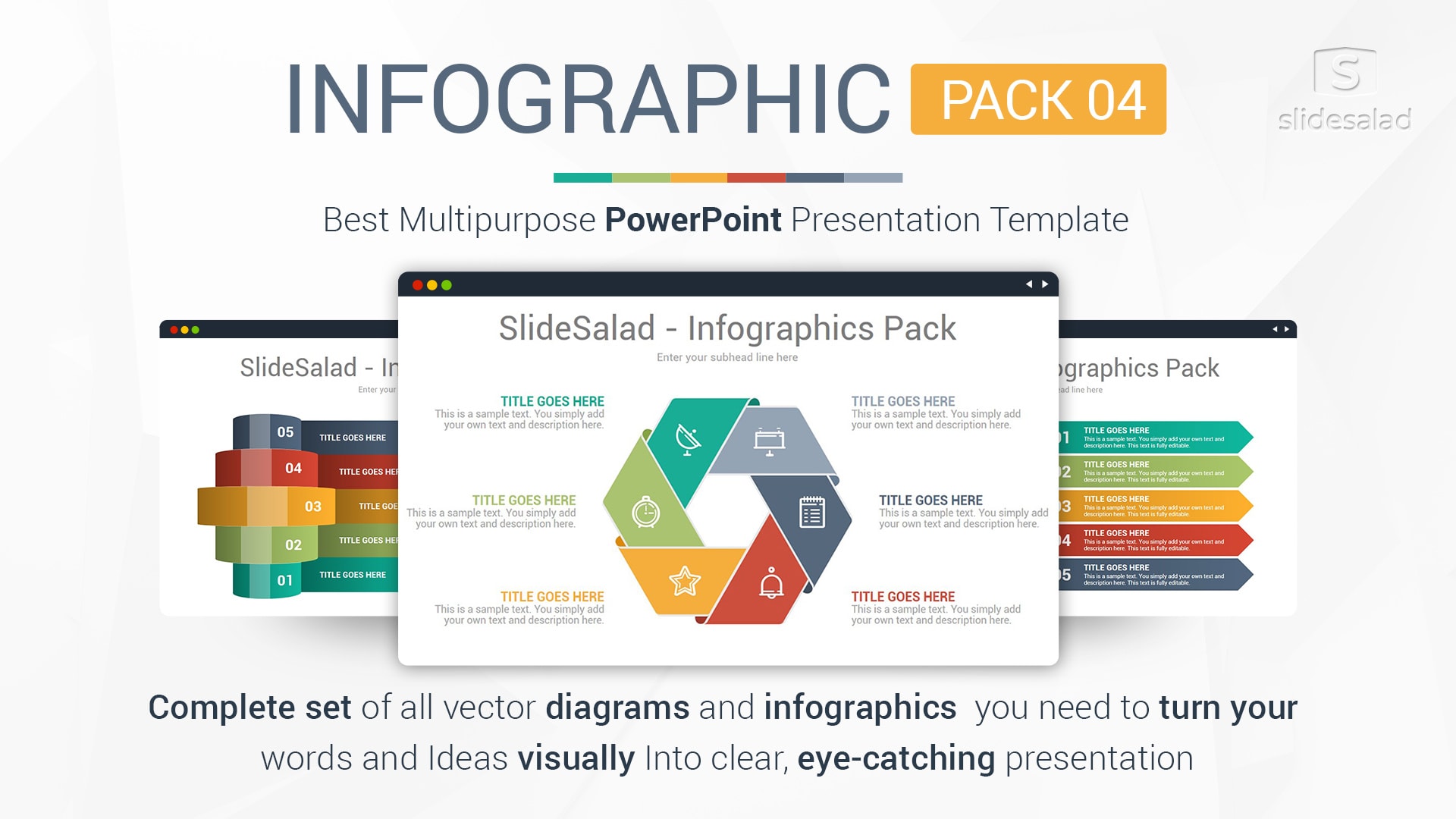
#POWERPOINT INFOGRAPHIC HOW TO#
When deciding how to visually share your information, follow these steps to create an infographic that is effective and engaging. Then right-click (or Ctrl-click) the selection.“Using an infographic to explain a complex topic can be incredibly helpful, but before you get started on an eye-catching design, you must first consider the goals for your graphic.” How to Create an Infographic To view the Combine commands, you need to select two or more shapes. Unfortunately they are so well hidden that you may not even be aware that they exist! You won't find these commands in any of the Ribbon tabs - nor will you be able to customize your toolbars to get these options.

I'm using what you taught in a presentation in Poland in the next couple weeks so thanks! It took a bit of exploring but here are the combine functions if you're using a mac.Ĭombine Shapes are new for PowerPoint 2011 and are a set of four tools that let you combine, unite, intersect, or subtract selected shapes in various ways, depending upon which shape overlaps the other. Video Workshop: How to Design Visual Feedback Meters in Articulate Storyline.Video Workshop: How to Design Custom Tabs Interactions.Video Workshop: Creating Tabs Interactions in Articulate Storyline.Video Workshop: How to Build Infographic Elements in PowerPoint.Video Workshop: How I Built This Video Gallery Template in PowerPoint.How I Built This Around the World E-Learning Quiz.How I Built This Healthy Food Game With Drag-and-Drop.That’s right, we’re not using the data and chart tools because we want the graphics to be editable in Articulate Studio and Articulate Storyline. In the next article, we’ll look at creating simple pie charts using PowerPoint’s built-in tools. You know how much we love examples and I’ll find a way to curate what you folks share into another post to showcase your work. If you try this effect, please include a link to your examples in the comments below. Once you combine the shapes, they’re lost. Just remember, to always save your source graphic shapes so you can use or edit them later. With that basic technique, you can apply this technique to just about any vector graphic you create in PowerPoint. In this example, we’re using the guides as temporary rulers but there’s nothing wrong with using the technique to create permanent guides for your own purposes. Now that your graphics and masking effect are in place, the final step is to create some guides to help you adjust the emphasis for each percentage. I mention this in the video but it’s worth repeating. NOTE: Before you begin, remember to duplicate your people graphic so you don’t lose the work you created in the previous step. You can learn more about Combine Shapes in this article. To combine the shapes, you’ll work with the Merge (Combine) Shapes tool introduced in PowerPoint 2010. Now that you have your collection of editable vector shapes, it’s time to combine those images into one graphic to create the masking or stencil effect. Step 2: Creating the Masking Effect for Your Graphics Check out the following video to learn how to combine basic shapes to create people: The secret to creating your own graphics is in seeing the basic shapes that make up the final graphics. The best part is you won’t need to create separate graphics for each percentage change.


In this article, I want to share a neat trick for setting up your graphics so they’re easily shaded to show percentages.

The first shows Simple Ways to Create Awesome Custom E-Learning Graphics and the second was a weekly challenge on Creating Your Own E-Learning Characters with Pictograms. We’ve written a few articles on creating custom pictograph characters for e-learning. PowerPoint is ideal because it’s not only a capable graphics program-it’s also a nearly universal tool, and the editable graphics you create can be used in Articulate Storyline. In this tutorial series, we’ll look at using PowerPoint to create simple infographic elements. They’re actually really helpful for anyone building online training because they use a lot of the same elements that course designers use to design e-learning. If you think infographics are only for marketing and data visualization, think again.


 0 kommentar(er)
0 kommentar(er)
